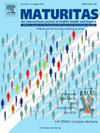中老年衰弱和糖尿病发病率的纵向变化:来自CHARLS的证据
IF 3.6
2区 医学
Q2 GERIATRICS & GERONTOLOGY
引用次数: 0
摘要
目的探讨体质变化对糖尿病风险的影响,以及性别和年龄是否影响这种关系。本前瞻性队列研究基于中国健康与退休纵向研究(CHARLS),在第二次调查前纳入了11,221名45岁及以上无糖尿病的成年人。衰弱指数(FI)评分范围从0到1,在基线(2011年)和第二次调查(2013年)期间进行,将参与者分类为健壮(FI≤0.10),预虚弱(FI 0.10 - 0.25)或虚弱(FI≥0.25)。虚弱的变化是由两个评估确定的。主要结局指标:主要结局指标为糖尿病发生率。采用Cox回归来评估衰弱变化与糖尿病的相关性,以及这种相关性是否因性别和年龄(≤65岁和≤65岁)而异。结果在中位7年随访期间,1197人患糖尿病。与那些身体健康的人相比,那些身体虚弱的人患糖尿病的风险几乎是他们的两倍(HR 1.99, 95% CI 1.70-2.33)。从健壮到体弱/体弱前期增加了风险(HR 1.80, 95% CI 1.48-2.19),从体弱前期/体弱到健壮的改善仍然增加了风险(HR 1.32, 95% CI 1.06-1.66)。高FI生育能力变化与糖尿病风险增加相关(HR 1.44, 95% CI 1.24-1.67),且趋势显著(P <;0.001)。女性患病风险较高(P = 0.004),但年龄对相关性无显著影响(P = 0.972)。结论:虚弱的进展与糖尿病风险增加密切相关,特别是在女性中,强调了在糖尿病预防中有针对性的虚弱管理的必要性。本文章由计算机程序翻译,如有差异,请以英文原文为准。
Longitudinal changes in frailty and incident diabetes in middle-aged and older adults: evidence from CHARLS
Objectives
To investigate how changes in frailty affect diabetes risk and whether sex and age influence this relationship.
Study design
This prospective cohort study, based on the China Health and Retirement Longitudinal Study (CHARLS), included 11,221 adults aged 45 and over without diabetes before the second survey. The frailty index (FI), with scores ranging from 0 to 1, was administered at baseline (2011) and during the second survey (2013), categorizing participants as robust (FI ≤ 0.10), pre-frail (FI 0.10–0.25), or frail (FI ≥ 0.25). Frailty changes were determined from the two assessments.
Main outcome measures
The primary outcome was incident diabetes. Cox regression was used to assess the association of frailty changes with diabetes and whether this association differed by sex and age (≤65 years and >65 years).
Results
During a median 7-year follow-up, 1197 developed diabetes. Those remaining pre-frail/frail had nearly double the risk of diabetes (HR 1.99, 95 % CI 1.70-2.33) compared with those remaining robust. Progressing from robust to pre-frail/frail increased risk (HR 1.80, 95 % CI 1.48-2.19), and improving from pre-frail/frail to robust still had an elevated risk (HR 1.32, 95 % CI 1.06-1.66). Higher FI tertile changes were linked to increased diabetes risk (HR 1.44, 95 % CI 1.24-1.67), with a significant trend (P < 0.001). Women were at higher risk (P = 0.004), but age did not significantly modify the association (P = 0.972).
Conclusions
Frailty progression is strongly linked to increased risk of diabetes, especially in women, highlighting the need for targeted frailty management in diabetes prevention.
求助全文
通过发布文献求助,成功后即可免费获取论文全文。
去求助
来源期刊

Maturitas
医学-妇产科学
CiteScore
9.10
自引率
2.00%
发文量
142
审稿时长
40 days
期刊介绍:
Maturitas is an international multidisciplinary peer reviewed scientific journal of midlife health and beyond publishing original research, reviews, consensus statements and guidelines, and mini-reviews. The journal provides a forum for all aspects of postreproductive health in both genders ranging from basic science to health and social care.
Topic areas include:• Aging• Alternative and Complementary medicines• Arthritis and Bone Health• Cancer• Cardiovascular Health• Cognitive and Physical Functioning• Epidemiology, health and social care• Gynecology/ Reproductive Endocrinology• Nutrition/ Obesity Diabetes/ Metabolic Syndrome• Menopause, Ovarian Aging• Mental Health• Pharmacology• Sexuality• Quality of Life
 求助内容:
求助内容: 应助结果提醒方式:
应助结果提醒方式:


